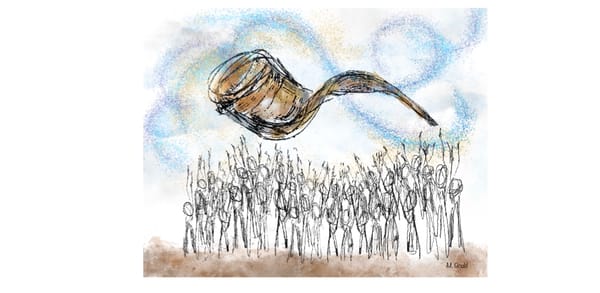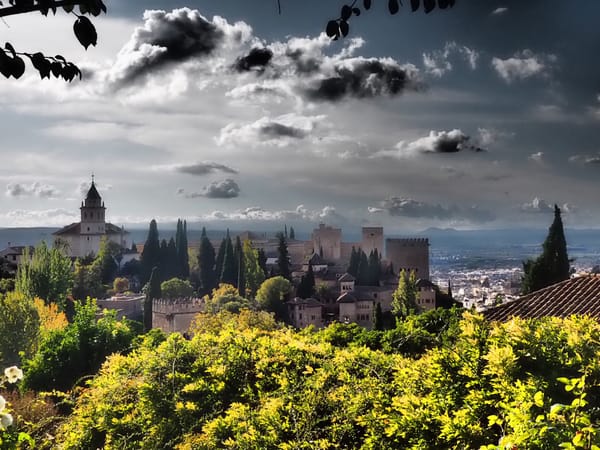New Year of the Trees

by Rabbi Min Kantrowitz
The “Tu” in Tu BiShvat is not a Hebrew word!
Tu BiShvat (ט״ו בִּשְׁבָט) is a Jewish holiday occurring on the 15th day of the Hebrew month of Shevat. Since every Hebrew letter has a numerical equivalent (aleph equals one, bet is two etc.) the fifteenth day of the month would be the 10th letter “yud”, followed by the fifth letter “hey”….but there’s a problem: these two letters are the first two letters of the unpronounceable name for the Divine—-and since we can’t risk mispronouncing that NAME, we use the ninth letter of the aleph bet “tet”, followed by the sixth letter “vav”, thus TetVav, pronounced “Tu”!
Which of the four Jewish New Years is Tu BiShvat? Why is it called the “New Year of the Trees”?
In Jewish law, four different ″New Years″ are observed: Rosh Hashanah (the first of Tishrei- (when the counting of the year changes), the first of Nisan (when the Exodus began), the first of Elul (at the beginning of the season of repentence), and Tu BiShvat (the fifteenth of Shevat, thee New Year of the trees). Tu biShvat marks the date for calculating the age of trees for tithing (similar to April 15 in the US). It’s the time of year when most of the year’s rain has already fallen (Talmmud, Rosh Hashanah 14a). The rainy season in Israel starts a few weeks before TuB. After Tu BiShvat,enough rain has fallen to make the soil fertile and the trees able to bear fruit. If a fruit grows before Tu,BiShvat it probably drew its nutrients from last year’s rain, and so we legally see it as last year’s fruit. But if a fruit grows after Tu, we legally see it as this years fruit.
What is a Tu BiShvat seder?
Tu BiShvat seder was created in the 16th century by Isaac Luria and other Kabbalists. It is a ritual meal during which the fruits and trees of the Land of Israel were given symbolic meaning. Some eat members of the ‘seven species’ mentioned in the Torah as growing in the land of Israel: wheat, barley, grapes, figs, pomegranates, olives and dates. Others eat unusual fruit—as many different kinds of fruit as one can find on one plate. A related idea based on Kabbalah, was that eating specific fruits and drinking four cups of wine in a specific order while reciting the appropriate blessings would bring human beings, and the world, closer to spiritual perfection.
How can we bring the meaning of Tu BiShvat into contemporary lives?
The day is often celebrated as an ecological awareness day, and trees are planted in celebration, treated as the Jewish "Earth Day" – with contemporary communities emphasizing all kinds of actions and activism related to the environment and the natural world. It marks the season in which the earliest-blooming trees in the Land of Israel (typically the almond trees with their pale pink blossoms) emerge from their winter sleep and begin a new fruit-bearing cycle.
What does Tu BiShvat have to do with hope?
Tu BiShvat ushers in the season of new beginnings. We realize that the sap has begun to rise even though the tree appears dead. At the end of winter, when we might be feeling bleak and colorless, after a cold, dark winter, our inner sap is rising: new possibilities are arising within us. We celebrate by eating fruits with a variety of outside coverings (nuts with hard shells, plums with edible skin etc.), to remind us to remove our own protective shells to reach the sweetness inside.
Hope for new, sweet beginnings are waiting, exactly when the natural world seems lifeless. Happy Tu BiShvat!
ALSO Read Rabbi Min's Relevant Purim Message here at the Academy for Jewish Religion: Transforming the Jewish World.

Jewish Community Foundation of New Mexico
Congregation Albert
Temple Beth Shalom
Jewish Community Center of Greater Albuquerque
The Institute for Tolerance Studies
Shabbat with Friends: Recapturing Together the Joy of Shabbat



